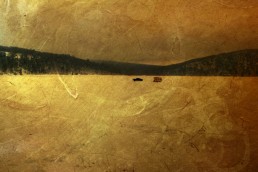A Vote for Going Barbless
SHARE THIS POST
I’m sitting behind my fly-tying vice demonstrating how I teach the craft. I say to my students, “I am an advocate of the barbless hook.” I make sure that everyone in my fly tying and fly fishing classes at Riveredge Nature Center in Newburg knows this.
“Well, maybe I should clarify that,” I continue. “I believe in barbless hooks for fly fishing.”
Then I explain why.
Do you use barbless hooks? If not, maybe this information below will change your mind. If you do, read on anyway, as you might find an extra tip or two.
For me it is a no-brainer: a flat hook will penetrate deeper with less effort than one with a sharp rising “bump.” In some instances, this is double the height of the hook’s shank, but is not always the case and depends on the manufacturer.
I can honestly say I don’t believe I ever lost a fish because of a barbless hook. That doesn’t mean I don’t lose any—I do. But not because I’m using a bent-down barb, and that includes the big chinook salmon that come into the rivers each fall to spawn.
To emphasize that last point, last fall a salmon swam under my line and got one of my flies stuck in its dorsal fin. I had to break it off, as one must do with such a hook-up. Later, I was into a school of kings that were cooperating beautifully and actually snapping up my fly. As I landed the third fish I noticed that it had my fly in its dorsal fin. How great was that? I had caught the same fish within 45 minutes, twice, and it had retrieved my lost fly to boot. So you see, even though the fly was barbless, it was still in the fish.
Are you enjoying this post?
You can be among the first to get the latest info on where to go, what to use and how to use it!
This is a good example why you can believe you will not lose fish when using barbless hooks.
The caveat here is that I do not “de-barb” all of my lures—only the flies and small jigs. Why flies? Because as demonstrated above, flies do not have the weight of other lures, therefore they do not shift around when a fish moves or shakes its head. It is this moving and shaking that loosens the hooks, thereby making the lure vulnerable to releasing. A barbless hook is better because it almost automatically sets deeper and then is basically “weightless.” I don’t buy barbless hooks; I simply flatten the barbs on regular hooks. I’ll do this before I tie a fly, using the jaws of the vice. This is the first thing I do. First, I’ve tied my own flies for decades, but like most tiers, early on I had never concerned myself with the barbs before. But years ago I caught myself deep in the arm with a barbed hook. The doctor removed the hook and had to give me a tetanus shot. Now, this was not a fly hook, but it got me thinking and I began experimenting with barbless flies.
Then on another day years ago while changing flies, I tied the selected fly onto my tippet and noticed it still had a barb. I then took my forceps to squeeze the barb flat. As I did so, the hook broke. Not good. Think about it: I had tied the fly and had carried it around in my vest for who knows how long before tying it to the tippet. Then, when I was ready to fish, I needed to crimp the barb and the hook broke—all that wasted time and materials gone in a microsecond. So now I flatten the barb before I start tying. If the hook breaks, I’m only out a hook with no time, materials or effort. It just makes more sense.
Recently I was at another class at RNC, a beginner’s fly fishing class, and much of the above conversation was discussed. One of the students mentioned that some places in Canada require barbless hooks no matter what you fish for or the tackle you use.
I then thought maybe I should do some additional “de-barbing” on my larger lures as well, as it might just save me a bit of money if I “hook” myself again.
One final fact to help you decide if you want to go barbless or not is that the main advantage of using a barbless hook is that it’s much easier to remove it when you practice catch and release—whether it’s for the fish or “from yourself.” When it’s the latter, you’ll certainly find going barbless is less painful.
MWO
SHARE THIS POST
Did you enjoy this post?
You can be among the first to get the latest info on where to go, what to use and how to use it!
Jerry Kiesow
Jerry Kiesow enjoys all aspects of the outdoors and shares them in many ways through his photos, words and workshops. He has written two books, Tales of The Peshtigo Putzer and Photos, Poems, and a Little Bit of Prose, that make great gifts. Check it all out at his website: jerrykiesowoc.com.



